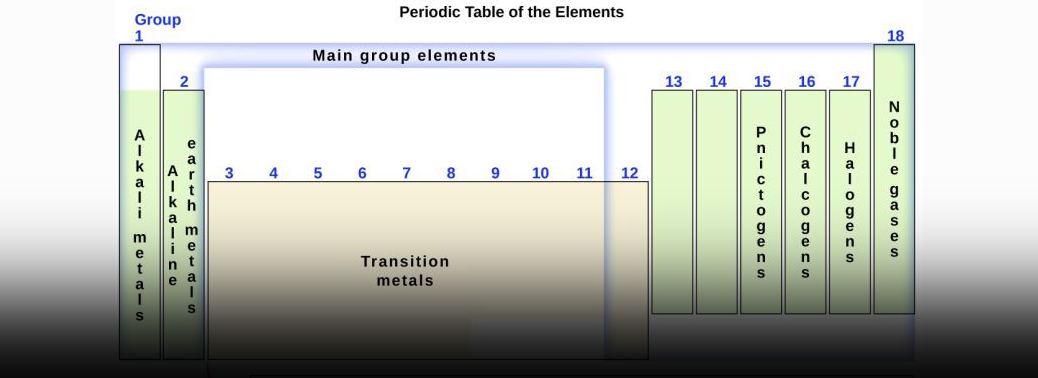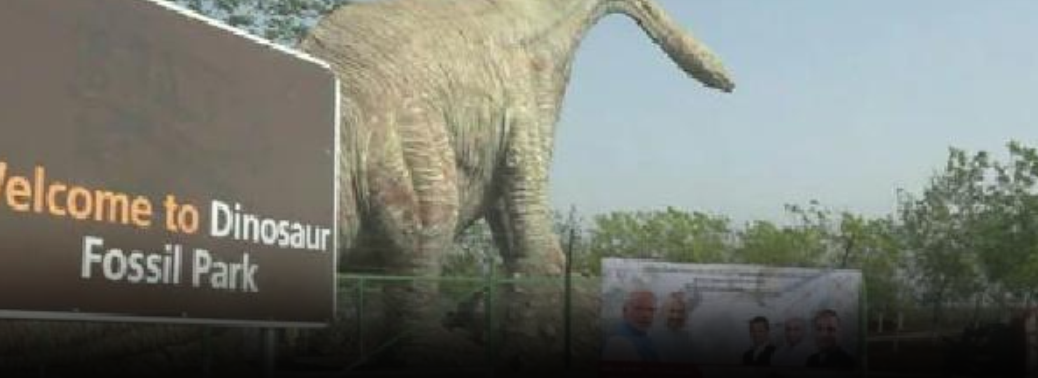Category: Science and Technology – developments – GS3K
Mendeleev and his Periodic Table of Elements
18, Jun 2019

The Modern Periodic Table:
- The periodic table is an arrangement of all the elements known to man in accordance with their increasing atomic number and recurring chemical properties.
- They are assorted in a tabular arrangement wherein a row is a period and a column is a group. Until 1863, the world was aware of only 56 known elements.
- The rate of scientific progress was such that every year, a new element was being discovered. It was during this time that Mendeleev came up with the idea of the Periodic Table.
- He published the Periodic Table in his book– The Relation between the Properties and Atomic Weights of the Elements.
- Mendeleev said that he arrived at the idea in his dream, where he saw all chemical elements falling into place on a table according to their chemical properties.
- Mendeleev had found a definitive pattern following which, each element could be placed according to their atomic weight.
- He had also predicted the qualities of the ‘missing’ (yet to be discovered) elements and gave them Sanskrit names.
Evolution of the Table:
- The noble gases including helium (He), neon (Ne), argon (Ar), krypton (Kr), xenon (Xe), and radon (Rn) were added to the table between 1895 and 1901.
- Likewise, additions have been made to the periodic table as new elements have been discovered in the last hundred years.
- In 1914, English physicist Henry Gwyn-Jeffries Moseley found out that each atomic nucleus can be assigned a number, according to the number of protons in that atom. This changed the way the periodic table worked. The table was redesigned according to the atomic number of elements rather than their atomic weight. Rare-earth elements, including the elements in the Lanthanide series, were included in the atomic table in the late 19th century.
India’s First Dinosaur Museum-Cum- Park in Gujarat
18, Jun 2019

Why in News:
- Gujarat Chief Minister Vijay Rupani inaugurated India’s first Dinosaur-Museum-cum-Park in Balasinor city in the Mahisagar district.
Highlights:
- It is set to give visitors a Jurassic Park kind of feel.
- The museum is located in Raiyoli area in Balasinor city which exhibit remains of various dinosaurs and fossil records. Dinosaur Museum cum Park is the first such park in the country and the world’s third park. Raiyoli area is the third largest dinosaur fossil site in the world and it is also the second largest dinosaur hatchery in the world, where thousands of eggs had been found.
- It is equipped with modern technology like 3D projection, virtual reality presentations, interactive kiosks and life-size dinosaur replicas.
- It will display the evolution of dinosaurs on earth and probable reasons for their extinction. It is a world-class tourism spot and will prove useful to students as well as experts.
E-Cigarettes Pose Public Health Risk, Says ICMR
01, Jun 2019

Why in News:
- The Indian Council of Medical Research (ICMR) has warned of a potential public health disaster if action was not taken to completely prohibit and dissuade the use of Electronic Nicotine Delivery Systems (ENDS) or e-cigarettes.
Details:
- The nicotine delivered by these devices adversely affect almost all systems in a human body.
- E-cigarette use adversely affects the cardiovascular system, impairs respiratory immune cell function and airways in a way similar to cigarette smoking and is responsible for severe respiratory disease.
- It also poses risk to foetus, infant, and child brain development
Harmful effects
- “Use of e-cigarettes has documented adverse effects on humans which include DNA damage; carcinogenesis; cellular, molecular and immunological toxicity; respiratory, cardiovascular and neurological disorders and adverse impact on foetal development and pregnancy,’’ Given the harmful health effects e-cigarettes pose to users, as well as passive exposure, failure to make appropriate interventions at the right time could lead to a public health disaster in India.
Urges complete ban
- There are more than 460 different e-cigarette brands with varying configurations of nicotine delivery available in the market, according to the ICMR.
- The ICMR has recommended complete prohibition on ENDS or e-cigarettes in India in the greater interest of protecting public health.
- E-cigarettes also open a gateway for new tobacco addiction, which is a potential threat to the country’s tobacco control laws and ongoing tobacco control programmes and efforts
ICMR
- ICMR is India’s apex scientific body for the formulation, coordination and promotion of biomedical research. It was established in 1911 as Indian Research Fund Association (IRFA) making it one of oldest and largest medical research bodies in the world.
- The ICMR functions under Department of Health Research, Ministry of Health and Family Welfare. It is headquartered in New Delhi.
India Facing Critical Shortage Of Healthcare Providers: Who
11, May 2019

Why in News:
- Despite the health sector employing five million workers in India it continues to have low density of health professionals.
Details:
- It is lower than those of Sri Lanka, China, Thailand, United Kingdom and Brazil, according to a World Health Organisation
- This workforce statistic has put the country into the “critical shortage of
- healthcare providers” category. Bihar, Jharkhand, Uttar Pradesh and
- Rajasthan are the worst hit while Delhi, Kerala, Punjab and Gujarat compare Southeast Asia needs a 50% increase in healthcare manpower to achieve universal health coverage by 2030. India faces the problem of acute shortages and inequitable distributions of skilled health workers as have many other low- and middle-income countries,’
New courses needed
- The need of the hour is to design courses for different categories of non-physician care providers.
- Competencies should be valued and reform must be brought in regulatory structures to provide flexibility for innovations,
- Data on the prevalence of occupational vacancies in the health care system in India overall is
- Government statistics for 2008, based on vacancies in sanctioned posts showed 18% of primary health centres were without a doctor, about 38% were without a laboratory technician and 16% were without a pharmacist,”
- The health workforce in India comprises broadly eight categories, namely: doctors (allopathic, alternative medicine); nursing and midwifery professionals; public health professionals (medical, non-medical); pharmacists; dentists; paramedical workers (allied health professionals); grass-root workers (frontline workers); and support
World Health Organization
- WHO is a specialised agency of UN
- It is concerned with international public health
- It acts as coordinating authority on international public health Established in 1948
- It succeeded the Health Organization, which was an agency of the League of HQ: Geneva, Switzerland
- India is a founder member of WHO.
- It is a member of UN Development Group (UNDP).
- WHO flag features the Rod of Asclepius as a symbol for healing
National Health Mission
- The National Health Mission (NHM) envisages achievement of universal access to equitable, affordable & quality health care services that are accountable and responsive to people’s needs. The National Health Mission seeks to ensure the achievement of the following indicators. Reduce Maternal Mortality Rate (MMR) to 1/1000 live births
- Reduce Infant Mortality Rate (IMR) to 25/1000 live births Reduce Total Fertility Rate (TFR) to 1
- Prevention and reduction of anaemia in women aged 15–49 years
- Prevent and reduce mortality & morbidity from communicable, non-communicable; injuries and emerging Reduce household out-of-pocket expenditure on total health care expenditure. Reduce annual incidence and mortality from Tuberculosis by half
- Reduce prevalence of Leprosy to <1/10000 population and incidence to zero in all districts Annual Malaria Incidence to be <1/1000
- Less than 1 per cent microfilaria prevalence in all districts
- Kala-azar Elimination by 2015, <1 case per 10000 population in all blocks
NOT KEEPING RECORD OF PRE-NATAL TESTS IS CRIMINAL: SC
04, May 2019

Why in News
- The Supreme Court upheld provisions in the anti-pre-natal sex determination law which ‘criminalises’ non-maintenance of medical records by obstetricians and gynaecologists and suspend their medical licence indefinitely.
Details:
- A Bench of Justices held that the particular provisions in the Pre-conception and Pre-natal Diagnostic Techniques (Prohibition of Sex Selection) Act of 1994 were necessary to prevent female foeticide in the country.
- The main purpose of the Act is to ban the use of sex selection and misuse of pre-natal diagnostic technique for sex selective abortions and to regulate such techniques.
- The court dismissed averments made by doctors that the provisions in the law criminalise even the smallest anomaly in paperwork which is in fact an inadvertent and unintentional error.
- The sections have made obstetricians and gynaecologists vulnerable to prosecution all over the country.
- “It is a responsible job of the person who is undertaking such a test i.e., the gynaecologist/medical geneticist/radiologist/ paediatrician/director of the clinic/centre/laboratory to fill the requisite information. In case he keeps it vague, he knows fully well that he is violating the provisions of the Act,
Pre-conception and Pre-natal Diagnostic Techniques (Prohibition of Sex Selection) Act
- The Pre-conception & Pre-natal Diagnostics Techniques (PC & PNDT) Act, 1994 was enacted in response to the decline in Sex ratio in India, which deteriorated from 972 in 1901 to 927 in 1991.
- The main purpose of enacting the act is to ban the use of sex selection techniques before or after conception and prevent the misuse of prenatal diagnostic technique for sex selective abortion.
- The Act was amended to bring the technique of pre conception sex selection and ultrasound technique within the ambit of the act.
- In 1988, the State of Maharashtra became the first in the country to ban pre-natal sex determination through enacting the Maharashtra Regulation of Pre-natal Diagnostic Techniques Act






